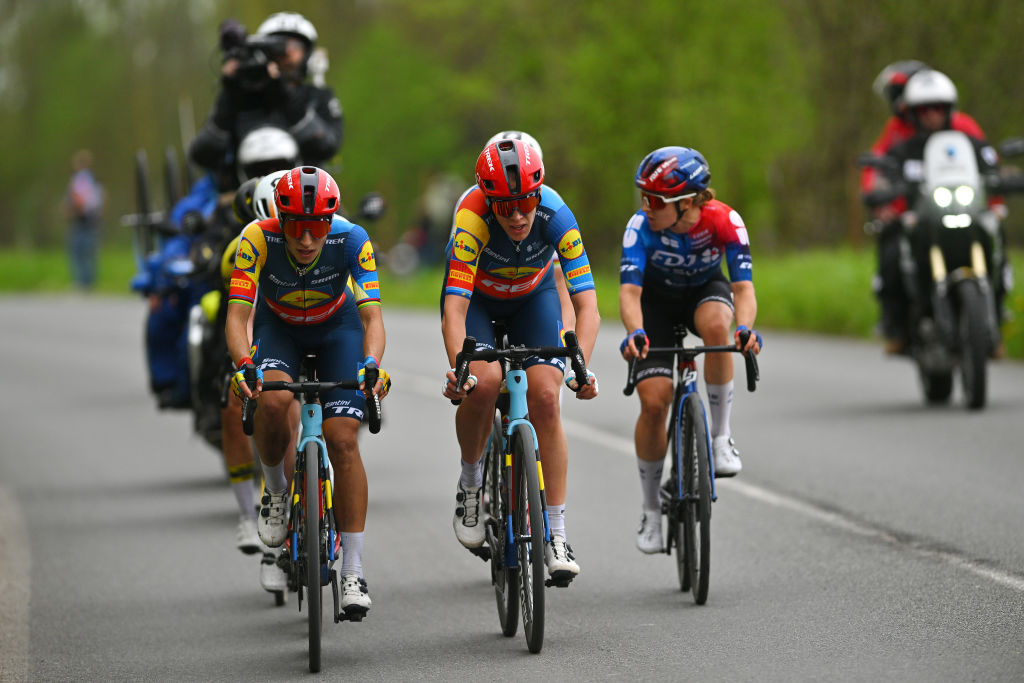Lidl-Trek has won Paris-Roubaix Femmes twice in its four-year history, but Elisa Balsamo came up short against winner Lotte Kopecky (SD Worx-Protime) in the 2024 edition and was in tears after her runner-up finish, though she could find the positives in her result later on.
In an interview with Cyclingnews after the race, Lidl-Trek’s sport director, Jeroen Blijlevens, said that Balsamo’s disappointment in her result shows how much she cares about performing at the Hell of the North.
“If you’re so close, then you’re really disappointed. How many times do you get in this situation in Paris-Roubaix? Next year will be different. I’m happy that she’s disappointed because when she’s so close, she has to be,” Blijlevens told Cyclingnews in the Roubaix velodrome.
Ellen van Dijk said that she was with Balsamo in the final, setting the pace in the group of six that also included Marianne Vos (Team Visma-Lease a Bike), Pfeiffer Georgi (DSM-Firmenich PostNL), and Amber Kraak (FDJ-SUEZ), leading them into the velodrome. Lidl-Trek was the only team with more than one rider in the lead group.
“We wanted to let Vos do some work, and she did that. Kopecky played it smart and was the strongest in the sprint. We put all our cards on the sprint; that was what we had to do because I lacked the acceleration to really make a difference,” Van Dijk told Cyclingnews when reflecting on the final ten kilometres after the last challenging pavé sector.
In the velodrome, Van Dijk led the group until the sprint was launched on the back straight.
“We talked about the situation before the race, and then it’s up to them how to do it. Elisa has a lot of experience. I think they did a good job, and Kopecky was just stronger,” Blijlevens said.
Earlier in the race, Van Dijk had been the most active rider, trying time and time again to get away from the peloton. She succeeded in forming a breakaway with Kraak, but they were caught by the favourites just before the Carrefour de l’Arbre.
“I had the freedom to try to go. I was happy with that and tried a couple of times. It was hard for me to get away, but I also needed to keep trying. I had good legs, I’m happy with my shape right now, and this is a good race for me. I was a bit scared of a crash ahead of this race, I’m really happy I’m still in one piece,” said Van Dijk.
The strong southerly wind was an important factor in how the race played out, as the tailwind made it easier for riders who would otherwise be able to ride away to follow their moves.
“The speed was really high on the sectors, so it was really hard to make a difference. I think that’s why there were not so many attacks,” said Van Dijk.
She made a couple of attempts to get away from the front group of six, but in the end, the decision was made to have Van Dijk pace the group and keep the chase group at bay.
“There was this little group behind. We wanted to keep them away, so we knew that if they were still far enough behind, then we would try something. But once they came a little closer, then we thought again, now we go for the sprint,” she said of the changing tactics in the final.


